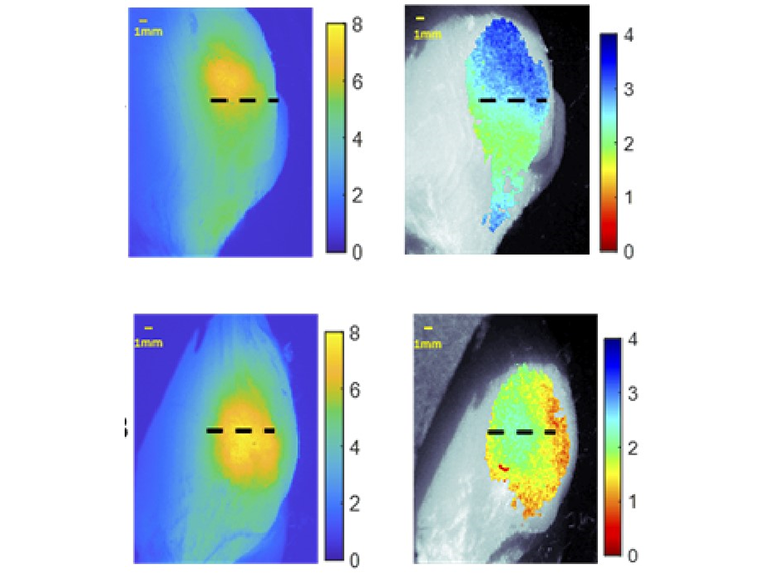Medical researchers at Washington University School of Medicine in St. Louis have developed a fluorescence imaging technique that allows them to illuminate a tumor in situ and calculate its depth below the surface of the body. The technique could assist surgeons in accurately removing a tumor and successfully excising an appropriate margin of healthy tissue to reduce the chances of tumor recurrence. The system involves administering a fluorescent dye and then using light at two different wavelengths to excite the dye. As light at different wavelengths will travel through tissue to different depths, the emitted excitation fluorescence can be used to calculate the depth of the tumor in the tissue.
Precision is very important when removing a tumor. Obviously, it is necessary to remove all the cancerous tissue, but without a way to easily distinguish between healthy and cancerous cells this can be a challenge. Typically, a surgeon will remove a margin of healthy tissue around the tumor to ensure that all of the cancerous tissue is included, but taking too much can hamper patient recovery and result in unnecessary pain and discomfort.

Fluorescence imaging systems that help to light up a tumor for surgical visualization have been developed, but typically these are not widely available and don’t usually provide quantitative data on tumor depth. “The few commercial systems that do provide quantitative depth information are large and expensive, limiting use outside of large medical centers,” said Christine O’Brien, a researcher involved in the study. “Our group built upon prior work in this field to develop a low-cost, simple system that can quickly determine the depth of tumor cells using near-infrared (NIR) fluorescent probes.”
This new system can provide data on tumor depth and it is also portable and low-cost, suggesting that it could be used more widely than existing imaging systems. To illuminate the tissue, the researchers used 730-nm and 780-nm LEDs to deliver light at different wavelengths. A CMOS camera is used to detect the excitation fluorescence. So far, the researchers have tested the system in mice with tumors. Imaging took only five minutes and the researchers found that the predicted tumor depth correlated well with the actual depth.
“Multiple research groups have contributed to the development of mathematical relationships that link fluorophore depth to ratiometric fluorescence measurements,” said O’Brien. “The surge of near-infrared contrast agents being developed for use in medicine encouraged us to build upon prior work and to create a system that works in the near-infrared and that is also low-cost and simple to use.”
Study in Biomedical Optics Express: Quantitative tumor depth determination using dual wavelength excitation fluorescence
